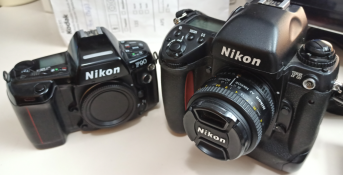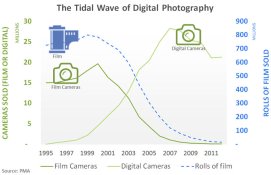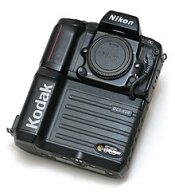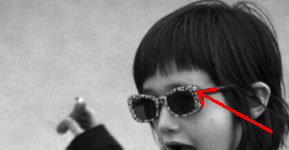Apparently they improved it for the DP-2 units. My new one seems to work perfectly, and I've never had a problem with the DP-3. I've only had trouble with small things on the body... My first doesn't have X-sync and the back latch is extremely stiff.Its just the DP-1 meters I’ve had die on me not the bodies. That’s why I went plain prism this time.
- Home
- Forums
- Analog Workflow Forums (100% Analog/Traditional)
- Analog Equipment
- 35mm Cameras and Accessories
You are using an out of date browser. It may not display this or other websites correctly.
You should upgrade or use an alternative browser.
You should upgrade or use an alternative browser.
What is the most rugged F and why?
-
A
- Thread starter Ariston
- Start date
Recent Classifieds
-
For Sale FS: Kodak 127mm f/4.7 Ektar and Graflex 103mm f/4.5 Trioptar lenses, $125
- Started by dirkfletcher
-
For Sale Paterson Super System 4 3-reel tank with two MOD54 reels
- Started by Steve Goldstein
-
Sold Arca Swiss D4M tripod head - classic mount
- Started by Guivd
-
Want to Buy 4x5 Camera: Horseman 45FA, Chamonix 45N-2, Chamonix 45F-2
- Started by Christopherjs
-
Want to Buy Saunders/LPL 4500ii 4x5 Glass Negative Carrier + 240-500 masking attachment
- Started by Grayjohn900
Forum statistics
George Mann
Member
Apparently they improved it for the DP-2 units.
Actually, the DP-2 is the least reliable finder do to faulty connectors.
Sover Wong details this issue on his site.
-

- Kyle M.
- Deleted
Kyle M.
Member
Actually, the DP-2 is the least reliable finder do to faulty connectors.
Sover Wong details this issue on his site.
I've heard the DP-12 (F2AS) is the most reliable and I've almost bought one on several occasions, but now that I have the DE-1 I'm pretty sure I'll stick with that. Carrying the meter I use for MF and LF is no big deal.
I've heard the DP-12 (F2AS) is the most reliable and I've almost bought one on several occasions, but now that I have the DE-1 I'm pretty sure I'll stick with that. Carrying the meter I use for MF and LF is no big deal.
Not only reliable, that version is also it is SUPER sensitive and ultra precise, "rated to read down to negative 4 EV at ISO 100 with f/1.4 lens! " This should be 30 seconds... This fact speaks on their own, telling how serious this 1972 Pro camera was.
https://www.kenrockwell.com/nikon/f2as.htm
I've only have shot a few rolls with a borrowed F2AS... but I soon realized what I had in my hands.
___________
All the one digit F are impressive, they mostly dominated the 35mm Pro market since the 60s to the 90s.
At one point Canon pushed strongly when they introduced lenses with the AF motor inside, for faster Pro AF. Nikon always had priorized using very well tested technology in the Pro cameras and they were slower in making a fast AF, the F4 (AF motor in the body) was slower than the Canon rival, their solution was the F5 but this was a very advanced development that required more time for its development. Pros were moving from Nikon to Canon because of the AF and the F5 was not ready yet... so Nikon had to promote the advanced Prosumer F90 to allow more time for the F5 development. When the F5 arrived in 1996 Nikon got the Pro market leadership again with some impressive features like the 1005 dots rgb matrix meter connected to a Neural Network, an impresive AF and a world class Flash exposure control.
In the digital era Nikon and Canon had an strong rivalry, today we have Sony challenging both... Canon sensors are said to be more portraiture oriented, depicting slightly better tonal separations of the skin, while Nikon (Sony sensors) are said to be slightly better for the rest, but that's about taste... what is true is that spectral sensitivity footprints are slightly different.
Kyle M.
Member
Not only reliable, that version is also it is SUPER sensitive and ultra precise, "rated to read down to negative 4 EV at ISO 100 with f/1.4 lens! " This should be 30 seconds... This fact speaks on their own, telling how serious this 1972 Pro camera was.
https://www.kenrockwell.com/nikon/f2as.htm
I've only have shot a few rolls with a borrowed F2AS... but I soon realized what I had in my hands.
___________
All the one digit F are impressive, they mostly dominated the 35mm Pro market since the 60s to the 90s.
At one point Canon pushed strongly when they introduced lenses with the AF motor inside, for faster Pro AF. Nikon always had priorized using very well tested technology in the Pro cameras and they were slower in making a fast AF, the F4 (AF motor in the body) was slower than the Canon rival, their solution was the F5 but this was a very advanced development that required more time for its development. Pros were moving from Nikon to Canon because of the AF and the F5 was not ready yet... so Nikon had to promote the advanced Prosumer F90 to allow more time for the F5 development. When the F5 arrived in 1996 Nikon got the Pro market leadership again with some impressive features like the 1005 dots rgb matrix meter connected to a Neural Network, an impresive AF and a world class Flash exposure control.
In the digital era Nikon and Canon had an strong rivalry, today we have Sony challenging both... Canon sensors are said to be more portraiture oriented, depicting slightly better tonal separations of the skin, while Nikon (Sony sensors) are said to be slightly better for the rest, but that's about taste... what is true is that spectral sensitivity footprints are slightly different.
The AS sensitivity really wouldn’t do much for me as I really only shoot in daylight and my gossen meter will go to negative 8 EV if I ever needed it too.
I do miss my F5. I’d have kept it but the LCD in the viewfinder was dying and I couldn’t afford the repair or replacement of the finder at the time. Someday I’d like to have another, but even as far as cameras go it’s not a big priority.
George Mann
Member
Pros were moving from Nikon to Canon because of the AF and the F5 was not ready yet... so Nikon had to promote the advanced Prosumer F90 to allow more time for the F5 development. When the F5 arrived in 1996 Nikon got the Pro market leadership again with some impressive features like the 1005 dots rgb matrix meter connected to a Neural Network, an impresive AF and a world class Flash exposure control.
As impressive as the F5 was, many pro's who bought the F90x (N90s) chose to stick with it when the F5 was released.
BradS
Member
Apparently they improved it for the DP-2 units. My new one seems to work perfectly, and I've never had a problem with the DP-3.....
It is problematic to draw conclusions about the population from sample size of one.
jimjm
Subscriber
Yep - one notable example is Galen Rowell, who certainly put his cameras thru some extreme conditions. He thought very highly of the N90s.As impressive as the F5 was, many pro's who bought the F90x (N90s) chose to stick with it when the F5 was released.
Yep - one notable example is Galen Rowell, who certainly put his cameras thru some extreme conditions. He thought very highly of the N90s.
This is mountain photography... Rowell substitued the F90 by the F100, using the F80 for treks and climbs. In the 80s and early 90s his primary device was the F4. The F5 was to heavy for him so he moved to the F100.
https://www.mountainlight.com/rowell/gr_camera_bag.html
Last edited:
As impressive as the F5 was, many pro's who bought the F90x (N90s) chose to stick with it when the F5 was released.
My 5 and my 90

I would also have chosen the $1000 F90 in 1996, the F5 costed $3000, which is $4,975.70 in 2020 dollars, using the currency calculator. Mine costed $250 from japanese ebay seller, like new. Right now price has increased a bit.
Then add that by 1997 Pros were starting to realize that future was to be digital, a reason to remain with the F90 and not throwing equivalent $5k in a F5, this was a long term investment in a moment when technology was to change radically:

Kodak DCS 760 was a Nikon F5 with a Kodak 6Mpix digital back, and the Kodak DCS 420, was a 1.2-megapixel digital SLR based on a F90 body.

This is the main reason why some Pros chose to stick with the F90, they wanted to see what was to happen before throwing today's $5k.
________________________
Regarding the 5 vs 90...
I love the 90 and I use it from time to time, but belive me, the 5 is another world. As mentioned, to not go to Canon, many Pros moved from the F4 to the F90 which had a better AF, the F90 is an advanced prosumer that can could be used well proffesionally, but the F5 plays in another league.
First a Pro valued of the F5 is its Matrix meter. It does not fail, never. You put more or less sky in the framing and matricial exposure stands stable because the camera interpreted the scene correctly, the thing does not doubt. 1005 RGB points covering all the frame. The camera intelligence (Neural Network) recognizes sky, water, snow, vegetation, and human skin. This was an impressive achivement in 1996 ! Imported from future.
The F5 also takes the latitude class from the DX and feeds that in the Neural Network, so it exposes perfectly CN, BW and slides. A Pro may rely in the F5 Auto meter to concentrate attention in a moving subject and in its expression, the camera won't fail and in average it will expose better than manually an skilled guy behind the F5.
A Pro had more reasons to prefer the F5... The F5 AF sported such a violence that cracked the gearings in some AF discount glass...
Finally, the TTL flash control of the F5 rocks, if fails not a single frame. Well, not finally, there are many other things...
Say we are wedding photographers... of course even the slow hassie may make an atonishing job in a wedding, but the F5 has the capability to get in the middle a group of people talking and to get several shots with natural expression before somebody noticed the photographer was there, it's ultra fast and precise, and every avaliable light or flash exposure is on spot...
For example, in this dynamic shot https://www.flickr.com/photos/125592977@N05/21478354193/ the kid was moving a lot, but I could nail focus exaclty where I wanted:

Fortunately later the expression was sound... I could not play total attention to all... focus, exposure, expression, composition. Is in those situations that a F5 shines like the sun, once you are used to this camera you team with it.
Of course if you are to photograph a mountain on tripod (or a mostly static subject) then a FM will do the same, provide one knows how to meter,
So (IMO) the F5 advantge is prominent when shooting is dynamic, if not what remains is the armor and the sealing. One may not do dynamic shootings, one not may shot in the rain, one may not go to a war to shot film. One may not need a F5 at all...
Last edited:
Oh really? I had no idea of this basic truth.It is problematic to draw conclusions about the population from sample size of one.
I am aware of a larger trend reported by others and I use my two cameras merely as examples of that trend
George Mann
Member
Oh really? I had no idea of this basic truth.
I am aware of a larger trend reported by others and I use my two cameras merely as examples of that trend
Some DP-2's have been modified by either a factory service center, or Sover Wong.
The only way to know is to open it up, and look for the presence of either coupling pins (unmodified), or wiring in the pins places (as detailed on Sovers site).
P.S. Coldeye told me that your camera was off up to a stop in low light (this can be adjusted).
BradS
Member
I like the Nikon F2.

Last edited:
logan2z
Subscriber
And people were telling me that owning two Nikon SLRs was overkill?

BradS
Member
And people were telling me that owning two Nikon SLRs was overkill?
fools!

I like the Nikon F2.

This is not a collection... this is an Armored Brigade

Also a nice collection of glasses...
Les Sarile
Member
Not only reliable, that version is also it is SUPER sensitive and ultra precise, "rated to read down to negative 4 EV at ISO 100 with f/1.4 lens! " This should be 30 seconds... This fact speaks on their own, telling how serious this 1972 Pro camera was.
https://www.kenrockwell.com/nikon/f2as.htm
The Nikon F2 was released in 1971 while the DP-12 equipped F2AS was released in 1977.
The manual and other online resources list EV -2 as the lowest. The manual shows how you can meter and use exposure times lasting up to 10 seconds - which is the minimum speed available to set the shutter on. This is impressive for a Nikon.
Yes, though I believe that identical metering performance was available for the pre-AI system on the DP-3 the year before that.The Nikon F2 was released in 1971 while the DP-12 equipped F2AS was released in 1977.
The manual and other online resources list EV -2 as the lowest. The manual shows how you can meter and use exposure times lasting up to 10 seconds - which is the minimum speed available to set the shutter on. This is impressive for a Nikon.
The Nikon F2 was released in 1971 while the DP-12 equipped F2AS was released in 1977.
The manual and other online resources list EV -2 as the lowest. The manual shows how you can meter and use exposure times lasting up to 10 seconds - which is the minimum speed available to set the shutter on. This is impressive for a Nikon.
Yes... sorry, I was not clear...
To compare, the year 2000 F80 is able to meter Matrix and Center: 0 to 21 EV; Spot: 3 to 21 EV (ISO 100; f1.4 lens).
Those -4EV in the 1977 F2AS, (or an older F2 with DP retrofit), is 4 stops more sensitive than the F80 made 23 years later, pointing what a serious device the F2 was... no dout, it was a true marvel of the era that ruled for a decade.
...and anyway the 1971 DP version is still two stops more sensitive than the F80 made 29 years later...
The F5 meters EV 0 to 20 , also less than the F2, still this is a miracle because it sports 1005 RGB spots, quite a more challenging technology. The AF in the F5 works from EV -1 to +19 (again rated at ISO 100 f/1.4), which is impressive...
Les Sarile
Member
- - - which is impressive...
. . . impressive until you compare it to the Pentax LX . . .

I think the real genius of the F2 is that they stayed out of their own way. They learned from the early problems of the F that they wanted to leave plenty of room for all kinds of different findera and accessories... Do you know that there's nothing on the F2 body that's specifically designed for the DS aperture control units? They slip on over the lens mount and flash mount. I don't think the designers had that in mind when first designing the body. But nothing gets in the way. Same with the DP's: Nothing on the body is involved with metering in any way, except to supply power to the head. Nothing about the body is groundbreaking, it's just a very nice body for the time with some features that, while they had existed, were somewhat rare at the time.Yes... sorry, I was not clear...
To compare, the year 2000 F80 is able to meter Matrix and Center: 0 to 21 EV; Spot: 3 to 21 EV (ISO 100; f1.4 lens).
Those -4EV in the 1977 F2AS, (or an older F2 with DP retrofit), is 4 stops more sensitive than the F80 made 23 years later, pointing what a serious device the F2 was... no dout, it was a true marvel of the era that ruled for a decade.
...and anyway the 1971 DP version is still two stops more sensitive than the F80 made 29 years later...
The F5 meters EV 0 to 20 , also less than the F2, still this is a miracle because it sports 1005 RGB spots, quite a more challenging technology. The AF in the F5 works from EV -1 to +19 (again rated at ISO 100 f/1.4), which is impressive...
They built a clean body and so they were able to expand it almost arbitrarily as the market and the technology they had changed.
Last edited:
I hadn't seen that one! That's for real!
. . . impressive until you compare it to the Pentax LX . . .
Yes... The LX is EV-5.5 to EV20... it makes 125s automatic exposures... but comparissons between brands are a bit difficult because we have to account for the precission in the extreme readings, and every brand has its own criterion to force the analog reading amplification (Op-Amp, suposedly) reading to the point they want. I would compare that to today's max ISO of a digital camera. Of course the LX is an impressive body...
The LX uses an "Off the film metering" derivative (https://en.wikipedia.org/wiki/Through-the-lens_metering#Off_the_film_metering) similar to TTL flash control, that it cannot be directly compared to the F2 metering system. Still not many Pros used the LX, being lighter it was as capable camera as the F3 and the Canon F1. For sure the LX it's an exceptional machine, but Pentax never had been strong in the 35mm Pro market...
Personally, I have Pentax in a high estim, I use the 67II a lot as and I shot often with Pentax Program A, mostly with a 50/1.7...
Last edited:
Rugged F's you say?... Ichinose Taizo...
When the Capa's jeep was blown by a mine in Vietnam he had a Nikon S with Kodachrome hanging from his neck and his old Contax II in the hand with BW, I'm curious if that Contax was a veteran of the Omaha beach...
Those Pro cameras were made to resist more than the war photograpers...
Les Sarile
Member
Makes sense they're plain prism F's for the obvious reason of no battery dependance and probably less dirt and water ingress. Besides, for daytime shoting, metering is not hard and getting the shot off is probably more important then getting perfect exposure under those conditions.
| Photrio.com contains affiliate links to products. We may receive a commission for purchases made through these links. To read our full affiliate disclosure statement please click Here. |
PHOTRIO PARTNERS EQUALLY FUNDING OUR COMMUNITY:  |

